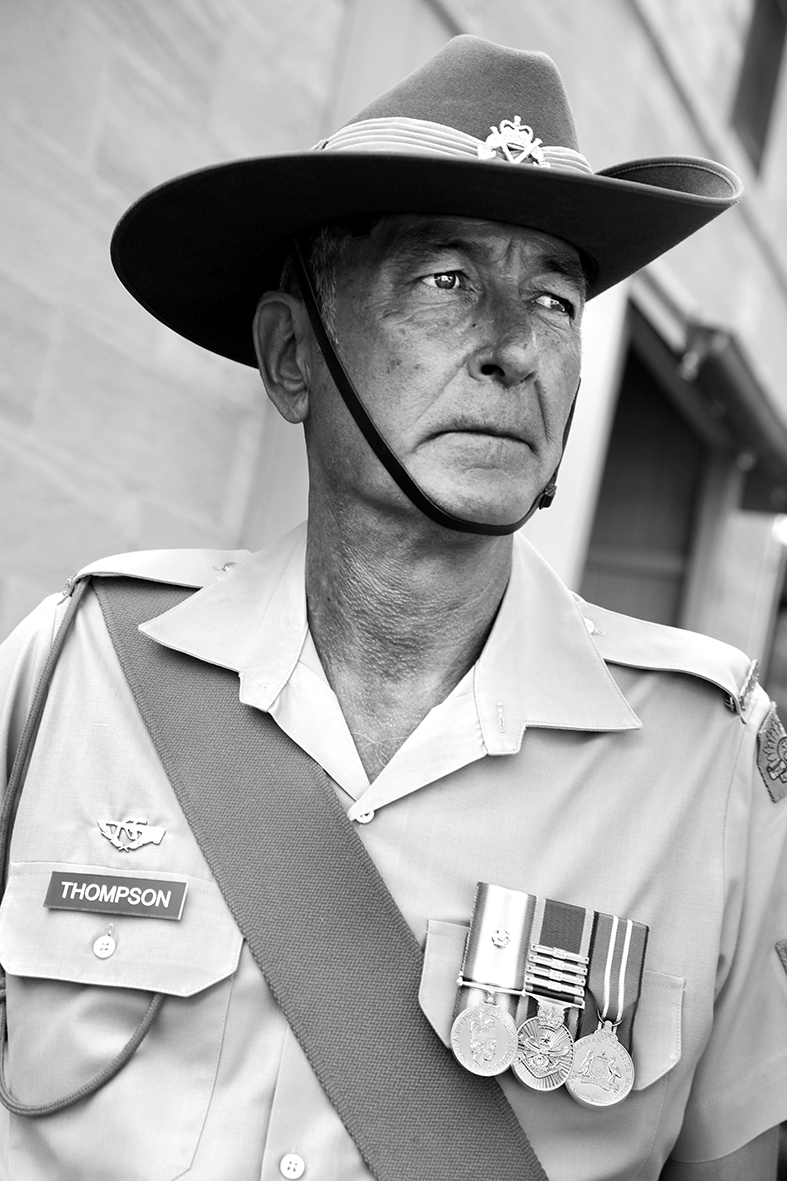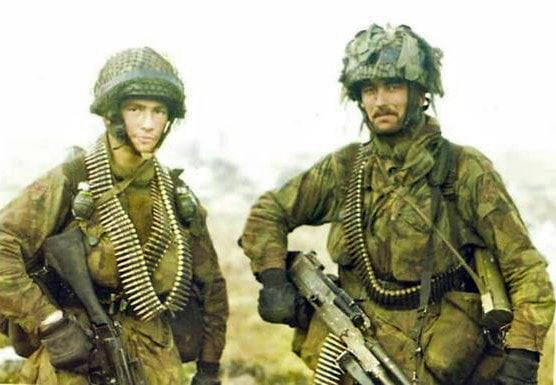Ian Thompson
Wiradjuri
Warrant Officer Class 2
4/3 Battalion Royal NSW Regiment
Royal Australian Infantry Corps 1975 – 1980 and 1986 – 2008
3rd Battalion, The Parachute Regiment
British Army 1980 – 1984 (Falklands War veteran)
Assistant Curator
Australian Army Infantry Museum, Singleton 2009 – 2024
Medals
South Atlantic Medal with Rosette 1982
Reserve Forces Medal 4 clasps with Federation Star (40 years service)
Australian Defence Medal
I was born in Sydney in 1958. I grew up and went to school in the Sutherland Shire. After leaving school, in 1975, I joined QANTAS as an apprentice Aircraft Maintenance Engineer. That same year, I enlisted in the CMF (Citizens Military Forces) as an infantryman with 4/3 Battalion Royal NSW Regiment. My dad had been in the infantry in WW2, at Tobruk and in the Pacific. However, I really wanted to join the British Army like my grandfather, who had been in the Royal Artillery before emigrating to Australia, becoming a stockman, and serving at Gallipoli and France in WW1.
By luck, while on holiday in the UK in 1977, I met Jack Frost, a Warrant Officer in the British Army. After discussing my idea of joining the British Army with Jack, I returned home to Sydney, finished my apprenticeship, and flew back to England to join up. I wanted to do something exciting, so I enlisted in the Parachute Regiment. After basic training, I was posted to C Company, 3rd Battalion (3 PARA). I was approached to be an undercover operative, posing as an Australian tourist, but didn’t take them up on the offer. Chances were, I wouldn’t have come back from a dangerous assignment like that!
On the 2nd of April 1982, Argentina invaded the Falkland Islands, a British dependency. At the time, 3 PARA was on Spearhead duty as the ready reaction force on 24-hour standby. We embarked as part of the Task Force on the P&O Cruise liner SS CANBERRA, which was still being hastily converted to a troopship even as we sailed. I was a section machine gunner, and my number 2 had been a cook on the CANBERRA before the Army, so we got extra food. They even had Australian beer. So, I was the Aussie who went to war with the British on a cruise ship, drinking VB in the Alice Springs bar! Those good times were not to last long, though! Once we reached the South Atlantic, it got very bloody cold, and the seas rough as it was the start of winter. We cross-decked onto HMS INTREPID, a Troop landing ship. We arrived on May 21 and landed unopposed at Port San Carlos, but within a few hours, the air raids began. Argentine jets screamed in low to bomb our ships lying offshore. As they went over, they strafed our positions, raining shells all around us.
On 27 May, we were ordered to march 90 km across the island and capture Port Stanley, the capital, by first taking the high ground on Mount Longdon. They told us to leave our big packs behind and that our rations would be delivered by helicopter. Unfortunately, the ship carrying the rations and helicopters, the MV ATLANTIC CONVEYOR, was sunk, so all we had to eat was what was sent forward to us, and we never saw our sleeping bags again! We marched day and night across rough terrain in bad weather. Everyone was exhausted and starving, and we began to get trench foot.
When we reached Mount Longdon at midnight on 11 June, we attacked the Argentines who were dug in on the heights and knew we were coming. We won but only after heavy fighting. We lost 23 good men, the highest casualties in any battle during the conflict. One of those was a great bloke, Sergeant Ian McKay, my Platoon SGT at Depot PARA. We’d talked two days before; like all of us, he’d lost a lot of weight, ‘You look fighting fit!’ I joked. ‘I’m bloody starving, Aussie!’ he said. That was the last time I saw him. He was killed leading a charge against a machine gun post, clearing it out single-handed with grenades. He was awarded a posthumous VC. After two days on the mountain, enduring a pounding from artillery, we moved down and took Port Stanley. After that, the Argentines surrendered on 14 June.
C Coy 3 PARA was used as Prisoner of War guards on board SS CANBERRA when we took the prisoners back to Puerto Madryn in southern Argentina. From there, we sailed back to Port Stanley, then transferred to the MV NORLAND before sailing to Ascension Island and then flying to the UK.
After returning to Australia, I worked for the Railway Police (TIB) before becoming a detective in the NSW Police Force. I then returned to the Railways and worked as a train driver for 30 years, retiring in 2018. In 1985, my wife, Therese and I married, and we have three sons, Scott, Ben and Dean. The following year, I re-enlisted in my old Army Reserve unit, 4/3 Battalion RNSWR, where I served until 2009 when I was offered a role with the Australian Army History Unit (AAHU) and appointed assistant curator at the Australian Army Infantry Museum in Singleton. It’s a great role, preserving and promoting the service and traditions of the Australian Army; one I’m very happy to perform until I finally retire from the Army in 2025.

